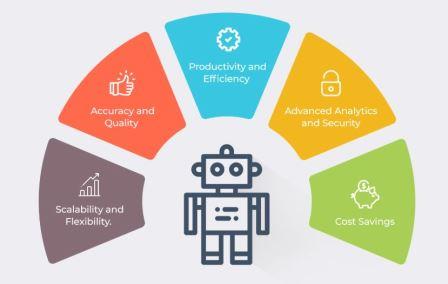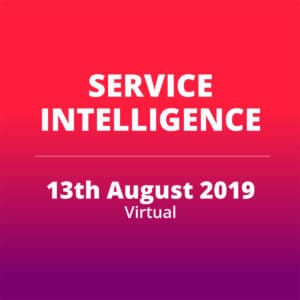
What is it and how does it work?
Robotic Process Automation (RPA) is undeniably becoming a significant asset in IT Service Management (ITSM). Alongside self-service and other elements of service automation, the ability to automate basic and repetitive processes, such as data entry and batch processing, has become a popular tool optimization capability for service operations. By utilising RPA, service desk staff are able to intelligently optimize workloads and effectively automate tasks that otherwise would require low-value human intervention. This allows more resource time to be spent on more valuable and proactive tasks.
While traditional automotive functionality, such as password resets or ticket routing offer efficiency benefits, RPA harnesses the power of software with artificial intelligence and machine learning capabilities to handle high-volume, repetitive tasks. For example, RPA software can be trained to capture and interpret the actions of specific processes in existing software applications, manipulate the data, trigger responses, initiate new actions, and communicate with other systems autonomously.
RPA vs ITPA
While both RPA and IT Process Automation (ITPA) operate under similar concepts, the difference typically lies in how each is used as well as their complexity. RPA is used primarily at end-user level, to automate repetitive day to day tasks, particularly if they do not possess certain technical skills. As previously mentioned, this can significantly boost productivity by allowing people to focus on more critical job functions.
However, ITPA tends to be used primarily for more complex workflows. For example, ITPA can automate incident management; i.e. it can handle incoming alerts, analyse, categorise and prioritise them; notify the appropriate analysts, and, following the appropriate action being taken, complete the workflow and close the interaction.
ITPA has the potential to be a key asset to a service desk. The benefits include increased speed of execution, improved customer experience, reduced human intervention, increased task adaptability and the reduction in the ineffectiveness and inefficiency associated with human error. All these benefits lead to cost reduction, and a positive impact on satisfaction levels, both among service desk staff, the wider business, and customers.
ITPA in a nutshell
In summary, RPA is automation for the end-user, while ITPA is more in-depth automation at the service desk level. To achieve greater levels of efficiency, a service desk should explore the benefits of automation in its service, and potentially implement it for as many processes and workflows as is viable. There is potential for operational expenditure to be reduced and the opportunity to exponentially improve service delivery. This can create a highly efficient and cost-effective environment and ultimately deliver more satisfying customer experiences.
How will automation affect the role of the analyst?
There is a perception in the service desk industry that the rise of service automation will cause job losses. However, recent surveys suggest that this is not the case. Service desk managers seem to acknowledge that automation will become a normal aspect of service in the next 3 to 5 years, and as a result, the role of the analyst will shift to encompass more technical tasks. In fact, our data shows that a large proportion of service desk professionals believe headcount will increase, despite the rise of automation.
The report, Analyst 2.0, is now available – download it now!
Want to learn more about RPA?
Sign up for SDI’s free Virtual Event
























